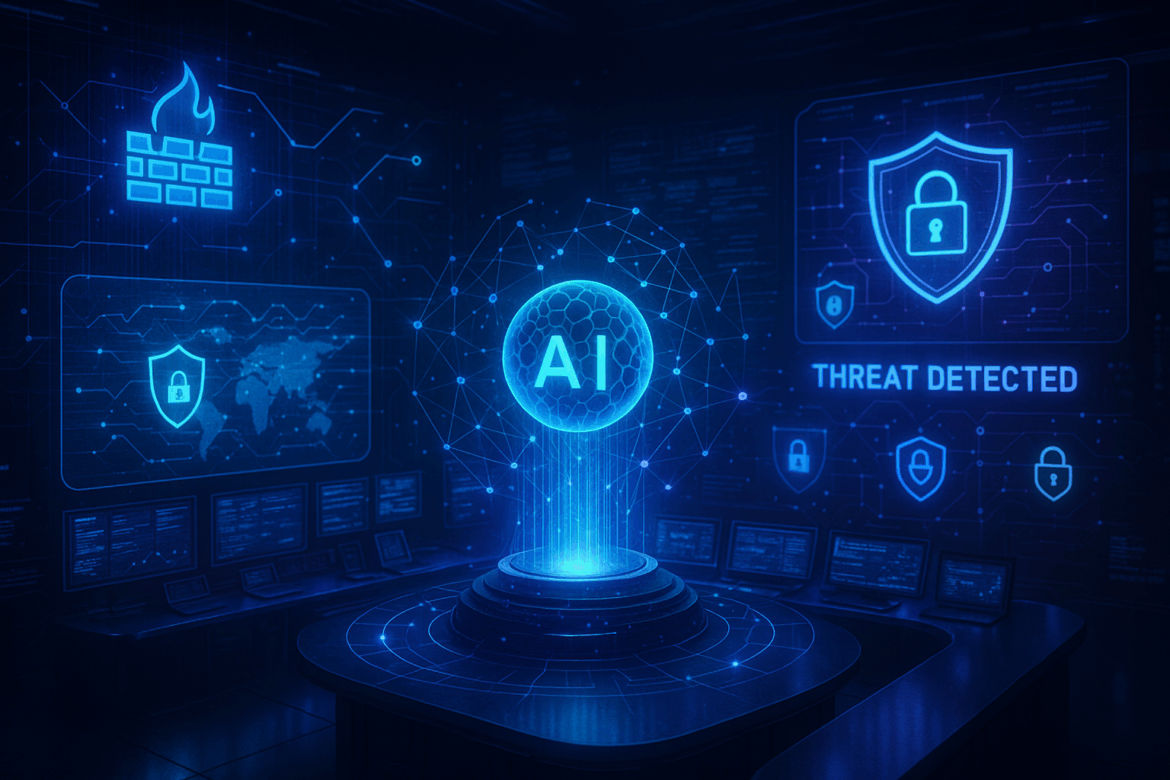In 2025, cyber threats such as hacking, ransomware, and data leaks have an increasing impact. To protect data and systems, companies now use AI-powered cybersecurity. This means smart machines detect and prevent cyber attacks.
Let’s examine this step by step.
🤖 What is AI-Powered Cybersecurity?
AI-powered cybersecurity uses artificial intelligence (AI) to secure computers, websites, and networks.
AI helps to:
- Monitor unusual online activity
- Identify new cyber threat types
- Respond , without human intervention
It functions like a tireless robot security guard.
❌ Why Old Security Methods Don’t Suffice
Standard cybersecurity tools have limitations:
- They stop threats we already know about
- People need time to look into issues
- They struggle with lots of warnings at once
Bad guys keep getting cleverer, and it’s harder to catch new attacks. AI steps in here—it works , thinks smart, and never sleeps.
⚙️ How AI Boosts Cybersecurity
1. Catching Problems
AI keeps an eye on how people and systems act. When something odd happens (like someone logging in from a weird place), it raises a flag.
2. Acting Right Away
AI can stop a hacker, cut off a risky link, or lock down a device on its own—no need to wait for a person to step in.
3. Always Learning
AI gains knowledge from previous attacks so it becomes more intelligent and improves its ability to identify threats as time passes.
4. Working 24/7
AI doesn’t rest. It maintains protection for your systems around the clock, every single day.
🏢 Who Uses AI Cybersecurity?
- Banks – to prevent fraud and bogus transactions
- Online stores – to secure customer information
- Hospitals – to safeguard patient records
- Governments – to shield critical national data
- Small businesses – to ensure security without employing large IT teams
✅ Benefits of Using AI for Cybersecurity
- Quicker threat detection
- Reduced workload for security staff
- Enhanced safeguards against novel and unidentified risks
- Brings long-term cost savings
- Operates non-stop even when humans are away
⚠️ Potential Drawbacks
While AI proves beneficial, it comes with some downsides:
- It might flag safe items (false positive)
- It requires training with reliable uncontaminated data
- Human oversight remains necessary to verify AI decisions
